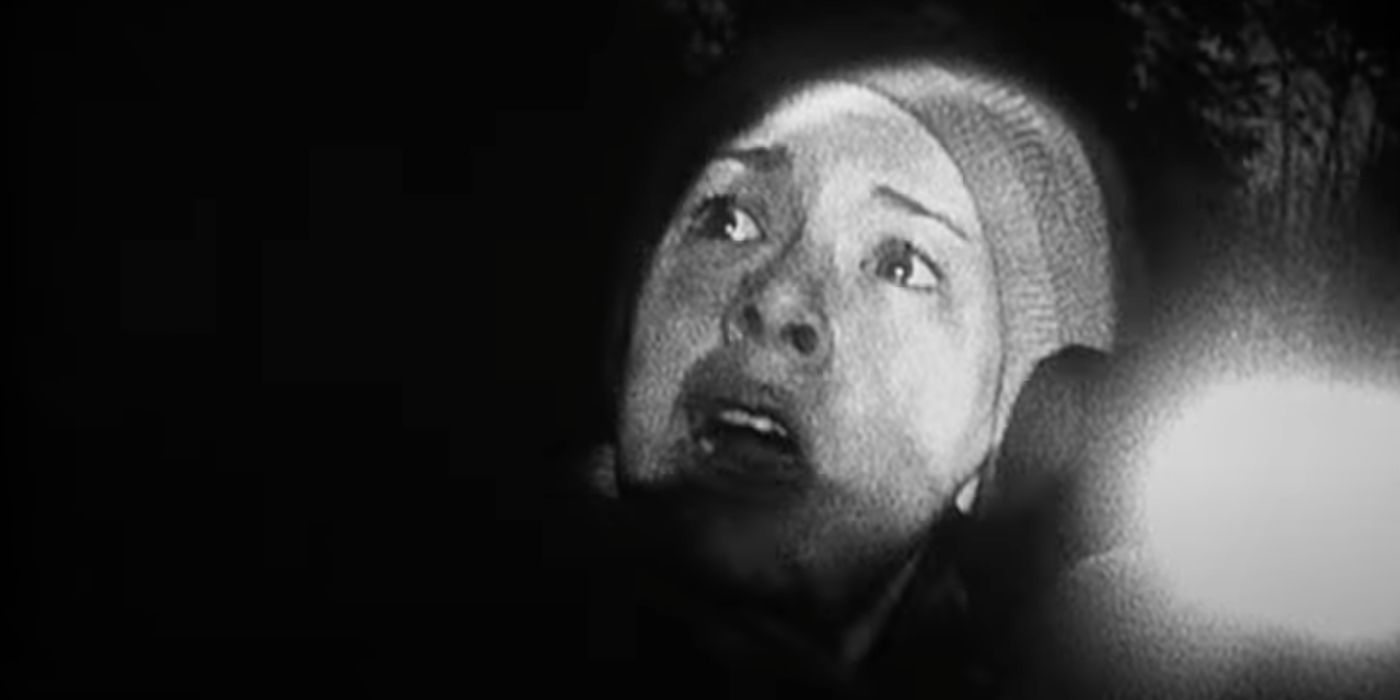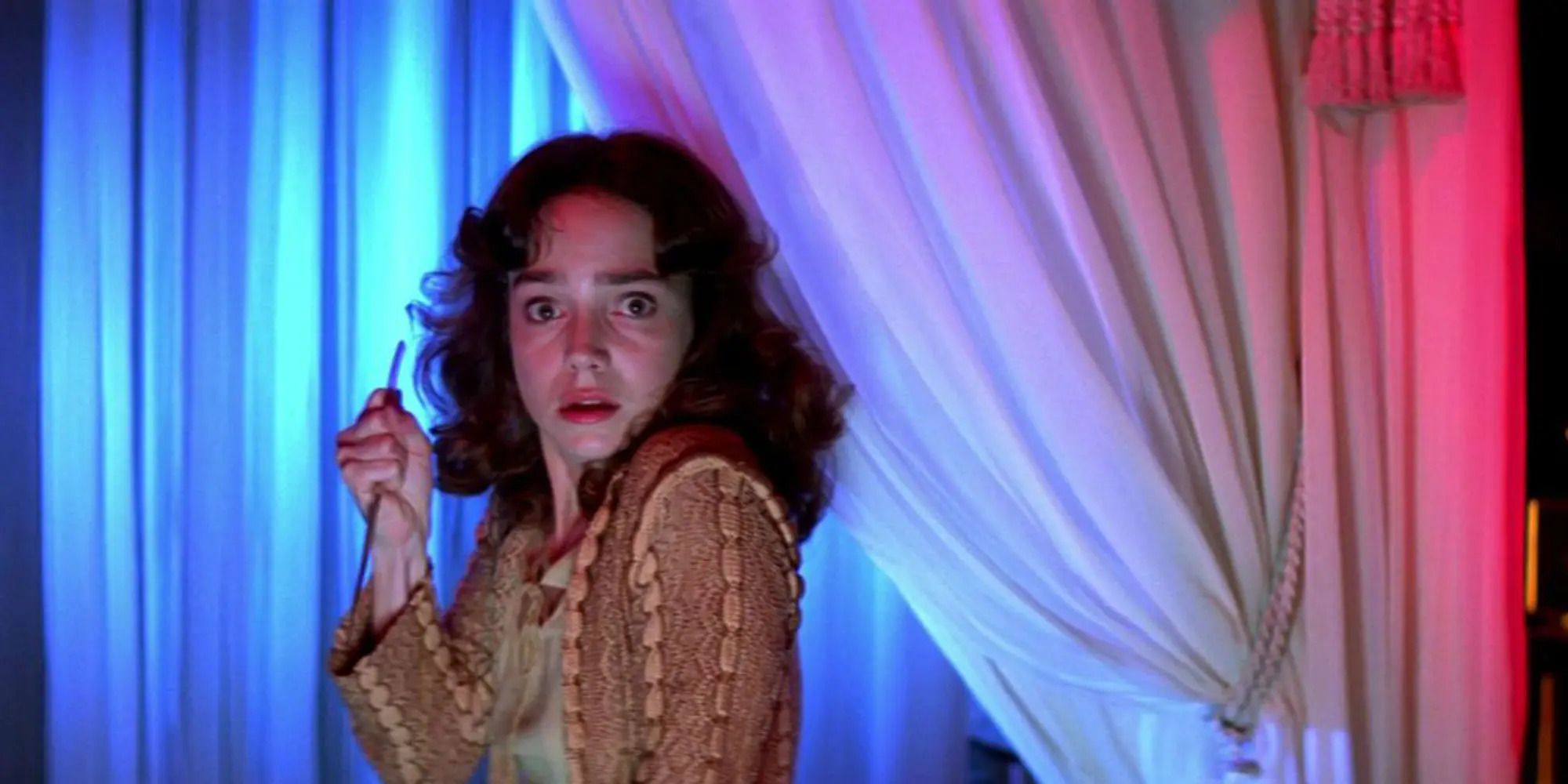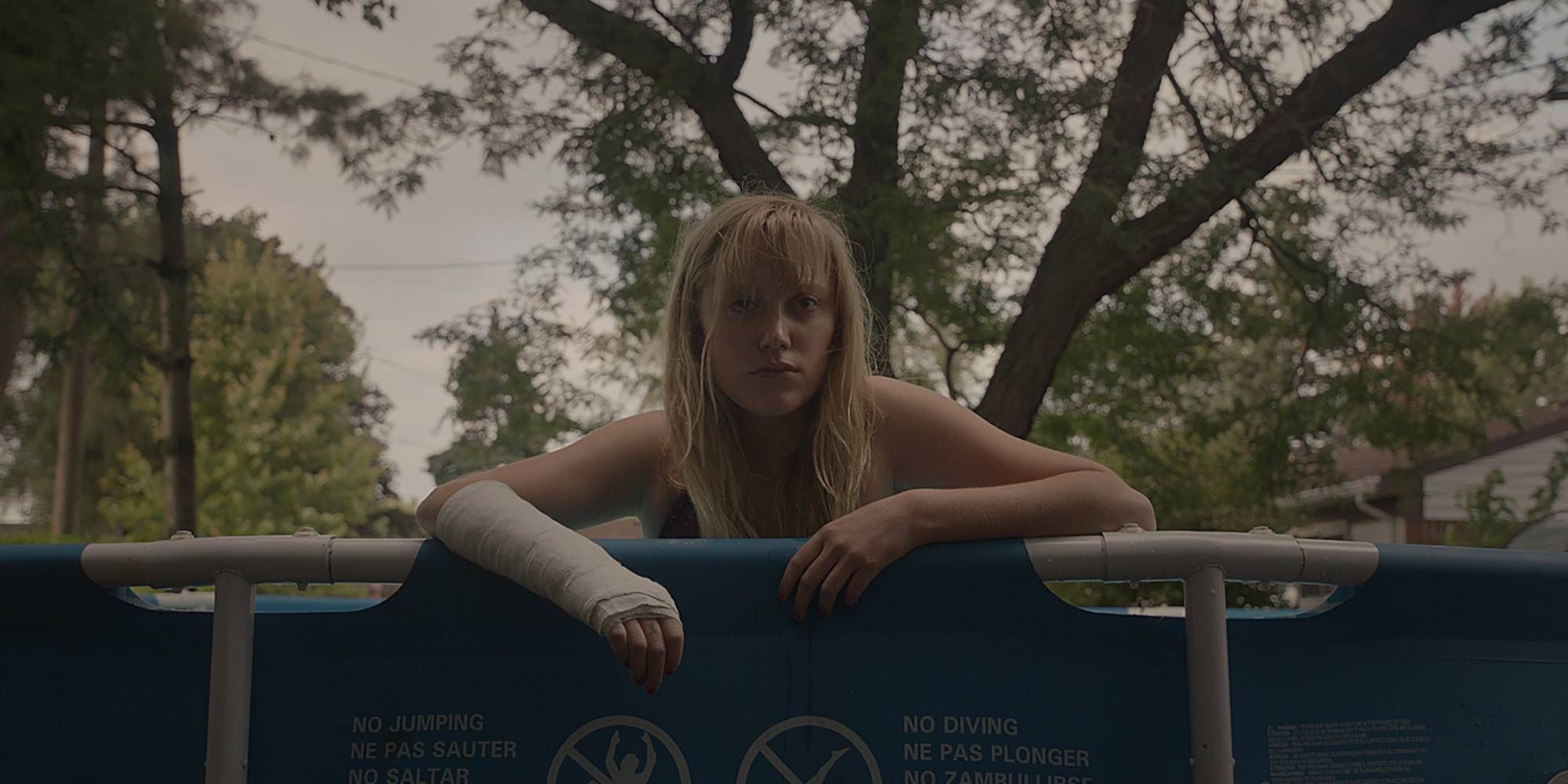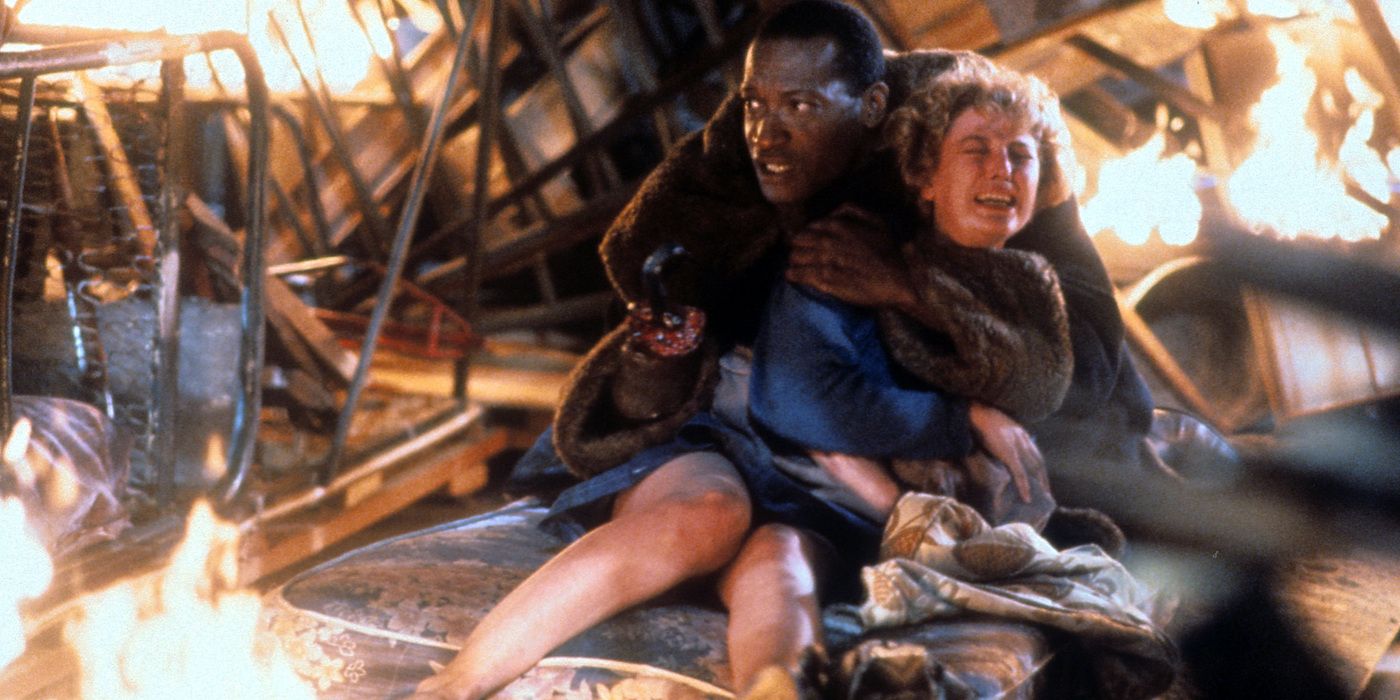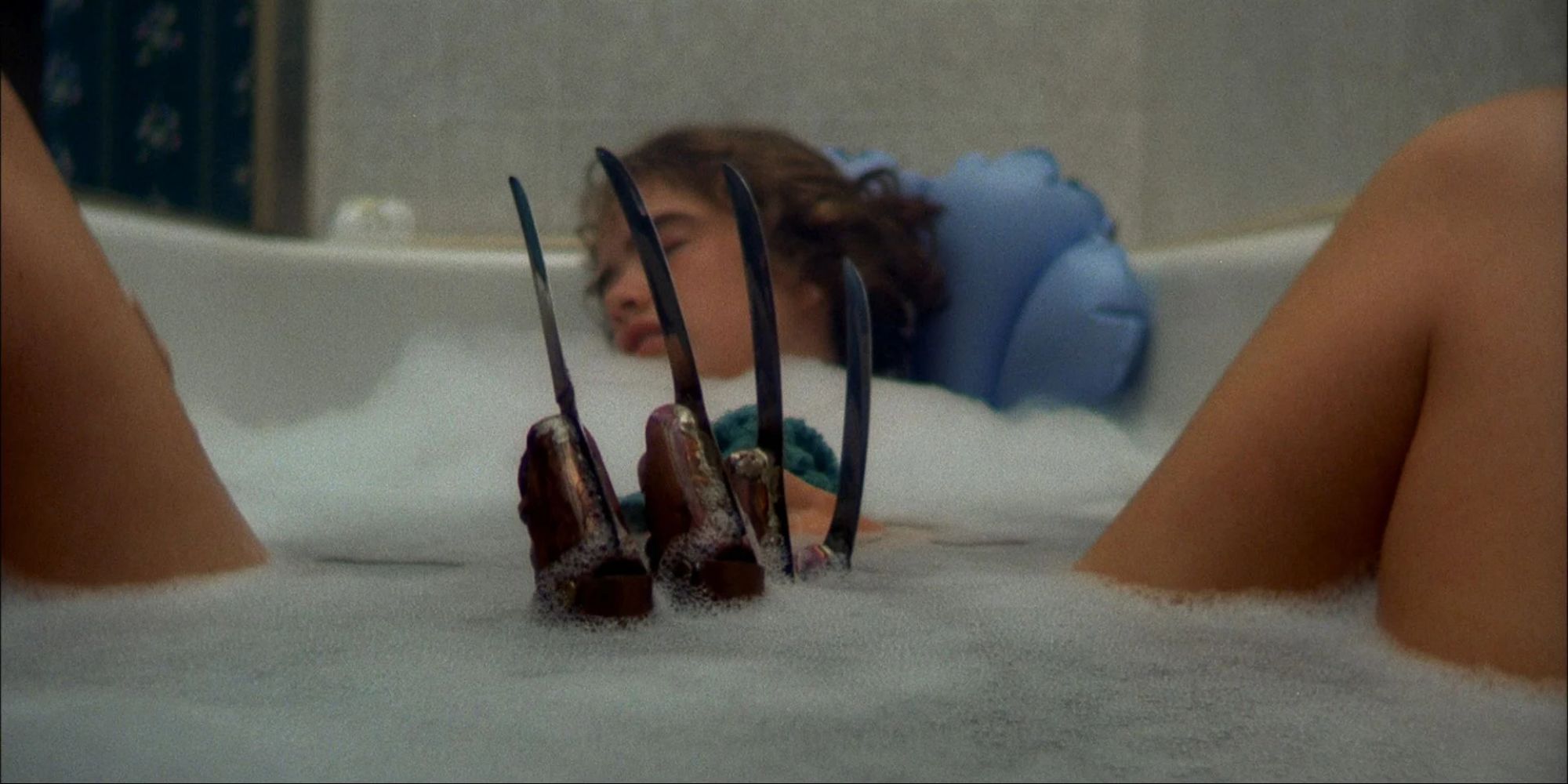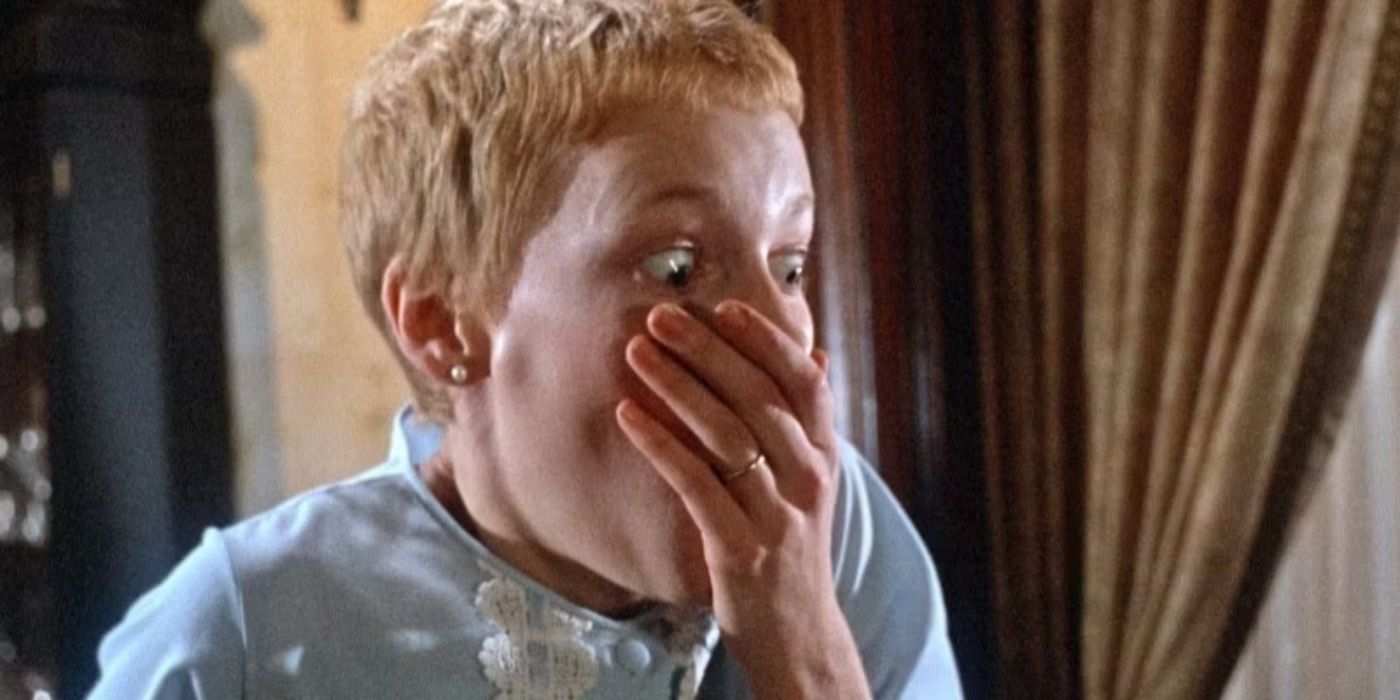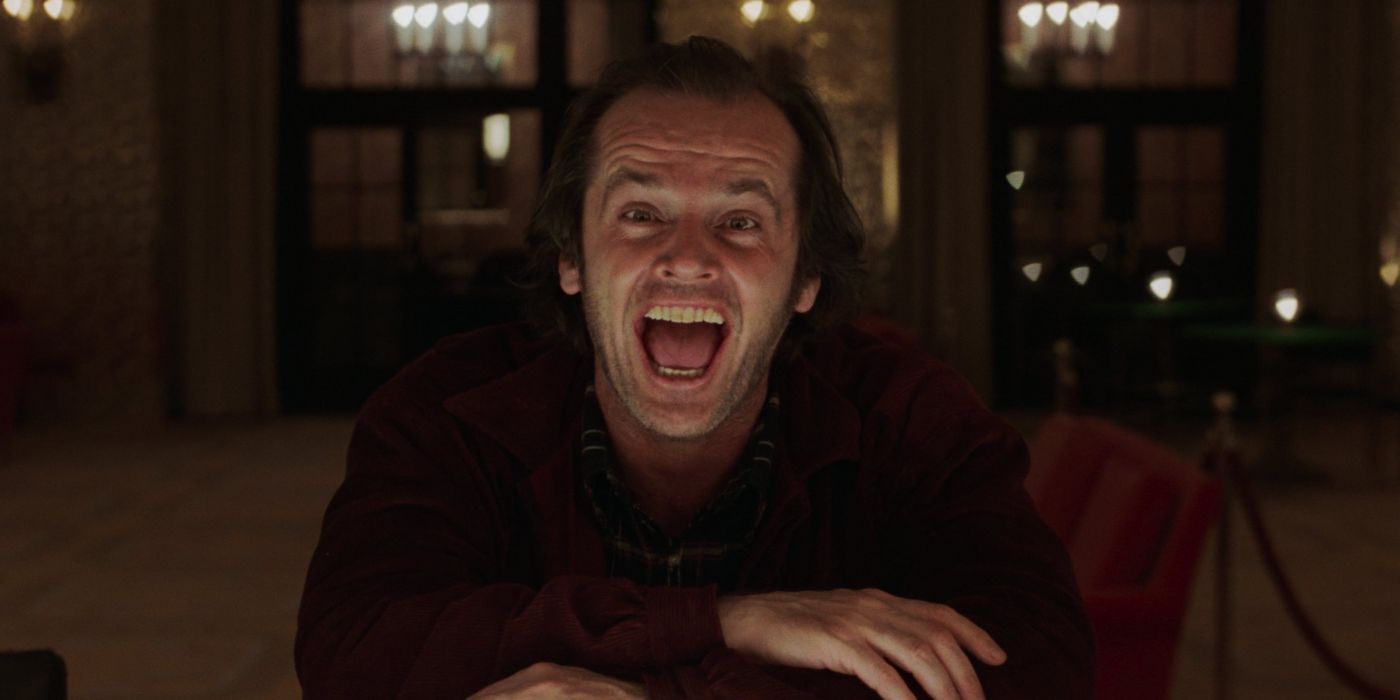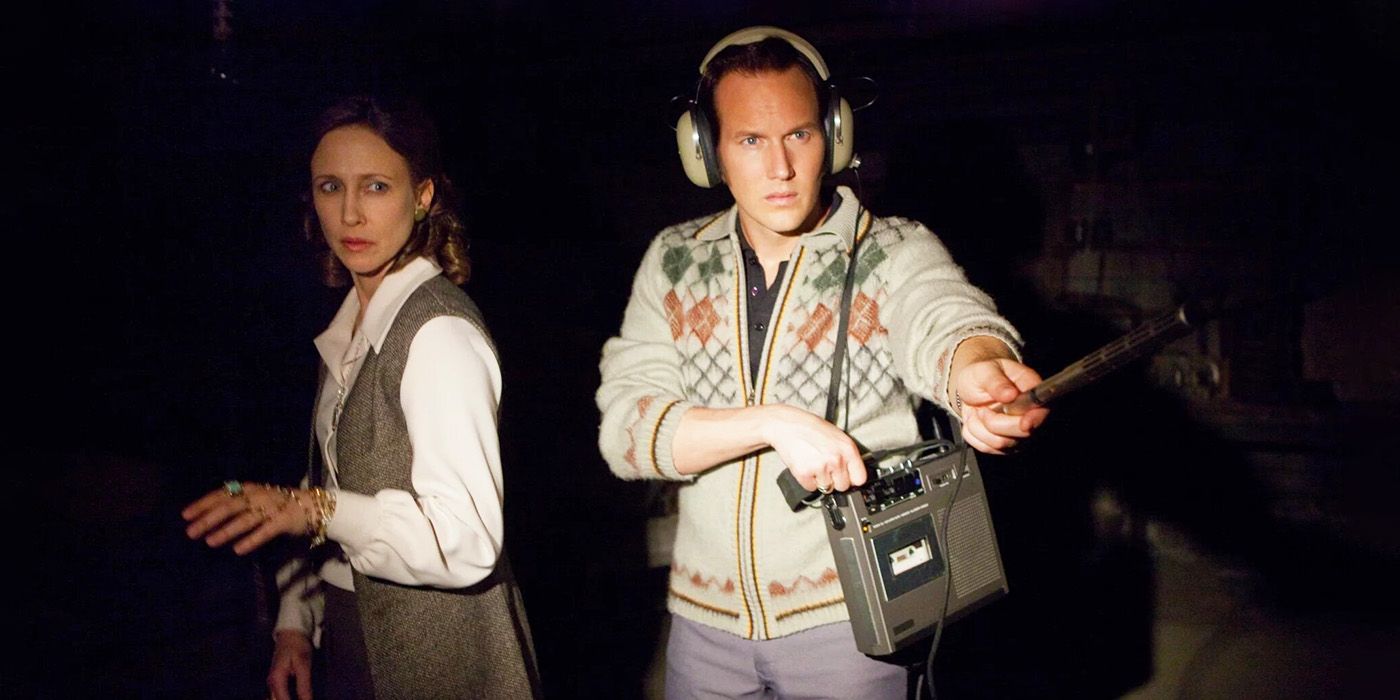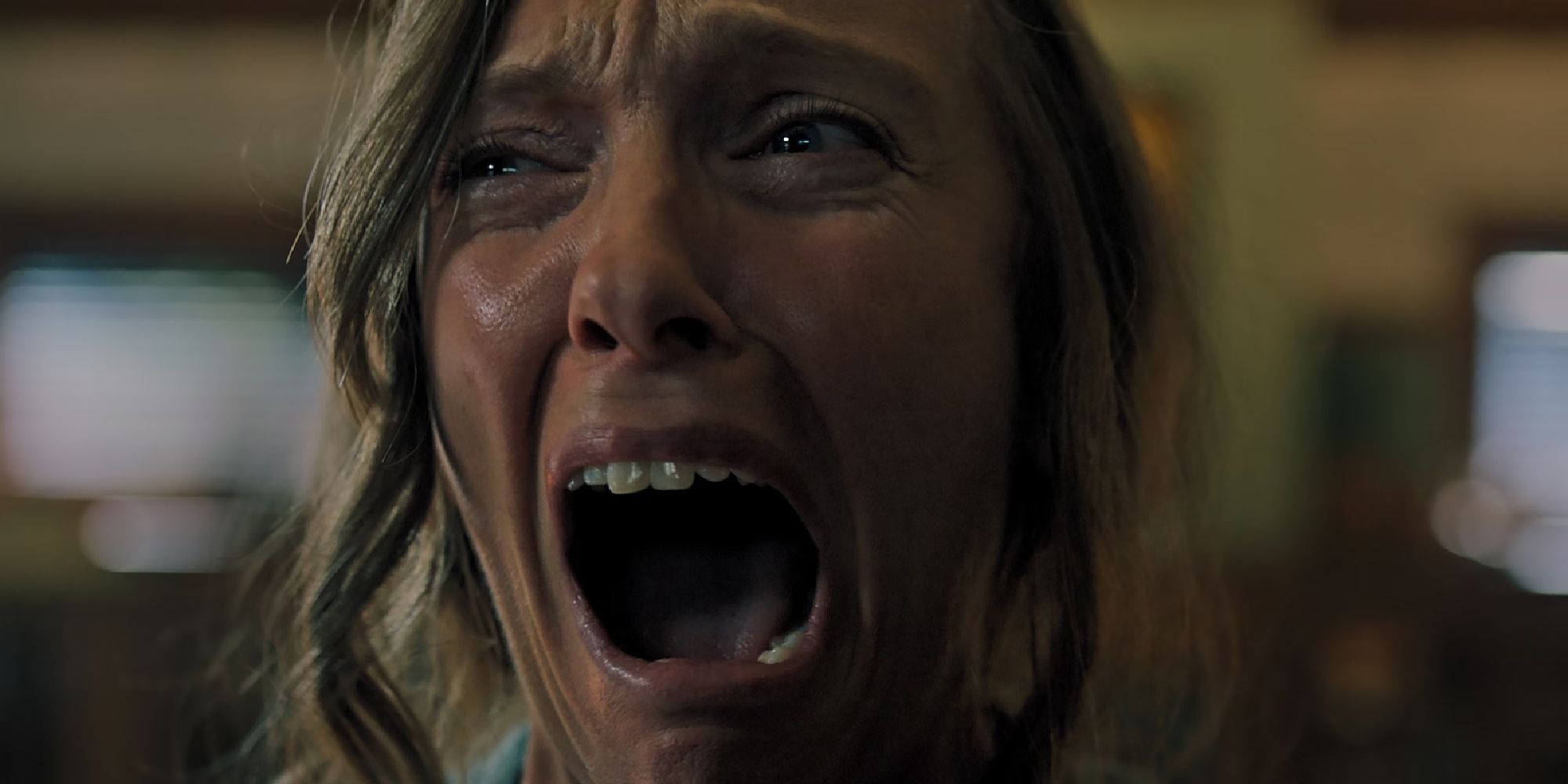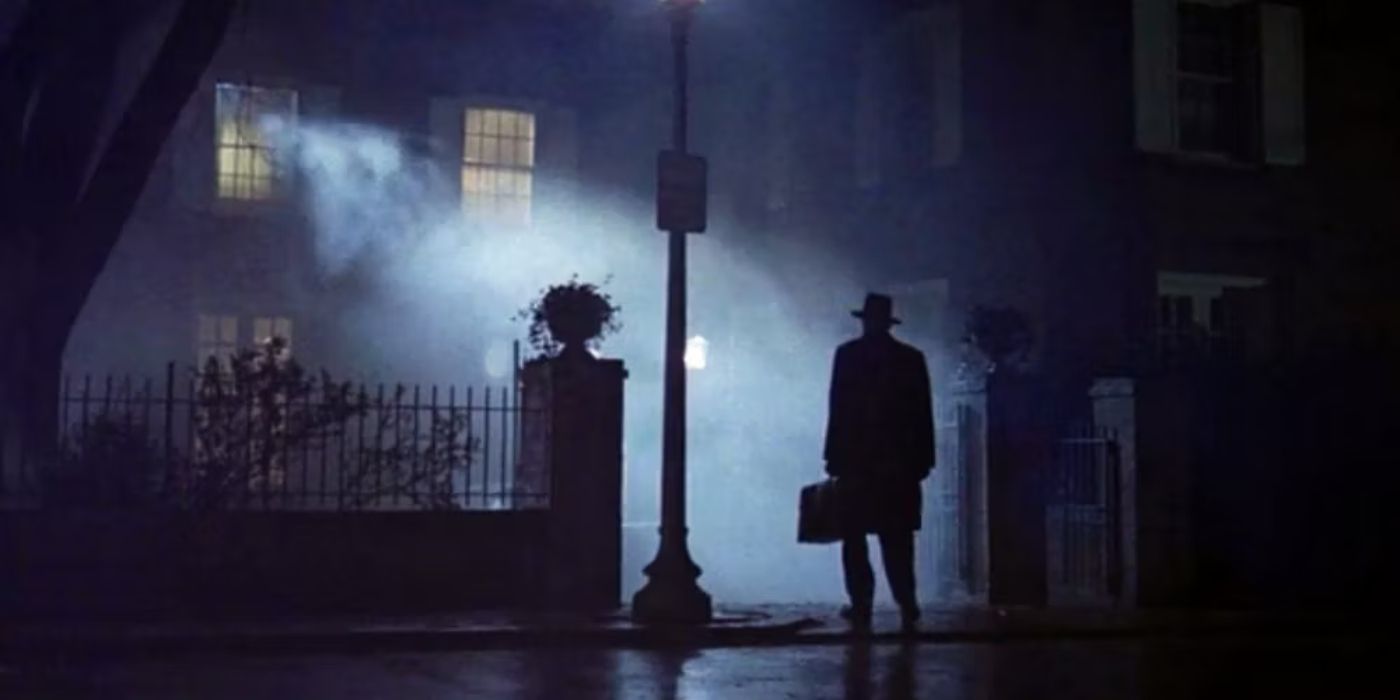Supernatural horror opens the boundary between the living, the dead, and the psychological warfare in between. The ghosts and ghouls of the best R-rated sub-genre films are terrifying specters designed to instigate a brand of fear that requires a relinquishment of control. These creatures from beyond the veil of reality can’t be defeated by calling the police or physical combat. That’s what makes them so scary. The rules of engagement are different, most often requiring divine intervention or a conquering of mental proportions. The reason the best supernatural movies work is because, in addition to getting the psychological buy-in from audiences, filmmakers incorporate technical expertise to pair sound, cinematography, and editing with calculated frights.
The best of the best supernatural movies get their R-rating from graphic manifestations, language, and violent confrontations among other elements. From Indie underrated flicks to iconic Oscar-winning movies, the titles in this category of the horror genre feature a diverse set of premises that think outside the box when it comes to spirits and their haunted houses, changing supernatural spectacles into taxing terrifying watches that leave audiences looking over their shoulders.
10 ‘The Blair Witch Project’ (1999)
Directed by Daniel Myrick & Eduardo Sánchez
This psychological slow-burn leaves the terrifying supernatural to the viewers. The Blair Witch Project is a found-footage-style horror movie about a trio of film students who enter the woods to document the local urban legend, the Blair Witch. After they mistakenly wander too far into the woods, what was supposed to be a quick camping trip turns into a series of petrifying encounters, proving that the Blair Witch may just in fact be real.
This supernatural horror film demands twofold audience participation: as passive voyeurs watching footage not meant to be seen, and as active participants conjuring their version of the Blair Witch. An iconic installment, The Blair Witch Project relies on its unique cinematography and lore build-up to create the occult presence only witnessed by those onscreen. The unseen presence of the titular creature cultivates hair-raising, pulse-quickening horror as audiences second-guess their next trip through the pines.
9 ‘Suspiria’ (1977)
Directed by Dario Argento
Suspiria is a supernatural movie dressed up as a slasher flick. The stylistic horror film takes audiences to Germany where Suzy Bannion (Jessica Harper), an American, arrives to begin her tenure at a prestigious ballet school. After being refused entry upon arrival, Suzy witnesses strange occurrences and unusual behaviors from her fellow students and instructors as, one by one, people disappear around the school. As the death count climbs, she makes a startling discovery about the school’s history.
In addition to its stunning technicolor visuals, Suspiria features a masterful sound design with some of the best musical thematic pairings of the genre. Even with a successful 2018 remake featuring scream queen, Mia Goth, the original film remains one of the best supernatural titles for its meticulous attention to technical filmmaking to elevate a basic premise instead of relying on visuals alone.
Watch on Xumo Play
8 ‘It Follows’ (2014)
Directed by David Robert Mitchell
Putting a modern-day scream queen, Maika Monroe, on the map, It Follows is an ominous movie that preys on the trust of the visible and the terror of the invisible. After a date hookup goes horribly wrong, Jay (Monroe) contracts a supernatural STD that physically follows her, walking, but determined. If It reaches her, she dies. Desperate to outrun the being, Jay and her friends go in search of answers to trace the supernatural being back to the first host.
With the sinister warning that It will take the form of someone you know or a stranger, the characters and audiences are left questioning who is human and who is not. Like many top-tier horror movies, It Follows was infamously snubbed by the Oscars in the screenwriting category for an out-of-the-box supernatural premise that traded demonic violence for intentional pacing that mimicked the film’s antagonistic entity.
7 ‘Candyman’ (1992)
Directed by Bernard Rose
A cult classic, the original Candyman not only scared audiences but provided social commentary on the conditions of the inner city public housing, race, and societal exploration of fears. Based on Clive Barker’s written anthology series Books of Blood and the story “The Forbidden,” the film adaptation features a knife-wielding, hook-handed villain summoned from beyond to the inner city of Chicago when a skeptical grad student takes interest in the superstitious lore surrounding a housing project. The myths she was quick to dismiss turn into reality as she becomes the target of torment by the titular entity.
Tony Todd’s iconic performance as Candyman is one of the many in the genre where the villain only physically manifests in the latter third of the film. Candyman is one of the best urban legend examination movies to dissect the fears of those onscreen and provoke a conversation among those in the audience. While the two sequel films would flop, the 2021 Nia DaCosta-helmed remake would reinvigorate the franchise.
Watch on Peacock
6 ‘A Nightmare on Elm Street’ (1984)
Directed by Wes Craven
Exploiting the psychological and physical vulnerabilities of sleep, A Nightmare on Elm Street proved to be just that for horror audiences for decades to come. A quintessential Wes Craven film takes viewers into the dreams of a group of teens targeted by a violent slasher named Freddy Krueger (Robert Englund), whose illusory manifestation translates to physical reality with bloody consequences.
Over four decades later, this supernatural slasher movie holds up on technical and cinematic fronts as audiences remain disturbed by the premise and Krueger’s appearance. The attack on the one place we’re meant to feel safe, our dreams, took premonition and spiritual horror to the next level.A Nightmare on Elm Street may have spawned a series of bad sequels and cross-overs, but the originality of the first installment was unlike anything viewers had seen from the mind of the genre’s most famous filmmakers.
5 ‘Rosemary’s Baby’ (1968)
Directed by Roman Polanski
An Oscar-worthy scare and landmark horror installment, Rosemary’s Baby laid the foundation for many supernatural genre tropes. Rosemary (Mia Farrow) and Guy (John Cassavetes) move to a unique New York apartment as they try to start their family; however, their odd neighbors, the Castevets, become intrusively involved in their lives, causing distance between Rosemary and Guy. When Rosemary becomes pregnant, she believes supernatural forces are threatening her and the baby, revealing the Castevets have Satanic motives for her pregnancy.
Layering in a supernatural element emphasizes the spectacular unseen forces that influence the character’s mental state with an ultimate manifestation of a physical antagonist. The movie hones in on the relationship between the scenery and the mounting mental tension instead of the physical nature of jump scares.Rosemary’s Baby remains one of the darkest Satanic cult movies of the genre, simultaneously serving as a psychological exploration of experience isolation, anxiety, and paranoia.
4 ‘The Shining’ (1980)
Directed by Stanley Kubrick
An original recipe for the supernatural movie, the haunted horror of The Shining makes it one of the best of the genre. Based on the Stephen King novel, Jack Torrance (Jack Nicholson) packs his family up and moves to an isolated mountain hotel where he’s hired as the winter caretaker. Empty except for Jack, his wife Wendy (Shelley Duvall), and their young son, Danny (Danny Lloyd), the Overlook Hotel is home to sinister forces that begin to latch onto Jack, driving him into a homicidal rampage.
Nicholson’s chilling performance and ability to switch Jack’s sanity on and off is immaculate, making for the perfect horror movie where the person who audiences presume is the hero becomes anything but. The vast emptiness of the grand hotel provides an uncomfortable, isolated silence bred in the haunted house genre. The influence of malignant spirits culminated in that iconic scene, one that is branded into cinematic history.
3 ‘The Conjuring’ (2013)
Directed by James Wan
Setting aside the blurred lines between dramatized fact and supernatural fiction, The Conjuring is one of the best demonic possession franchises. The movie is based on case files from real-life paranormal investigators Ed and Lorraine Warren (portrayed onscreen by Patrick Wilson and Vera Farmiga), particularly the Perron’s and their five daughters terrorized by spirits attempting to possess their matriarch Carolyn (Lili Taylor). After moving into a secluded farmhouse, stranger occurrences and manifestations start mildly and progress to malevolent as the family is worn down by the nightly hauntings.
The Warren files have inspired one of the highest-grossing horror franchises of all time, with audiences fascinated by the possibility of the real-life hauntings portrayed onscreen. Whether a hoax or a horrifying reality, The Conjuring seals the supernatural deal with its calculated jump scares, wide-panning shots, and claustrophobic exorcism.
2 ‘Hereditary’ (2018)
Directed by Ari Aster
Ari Aster’s directorial debut with Hereditary was one of many that reawakened the notion that cinematic horror was making a comeback. Toni Collette stars as Annie, a grieving woman reeling from her mother’s death before suffering yet another tragic loss. As she looks for ways to cope, Annie discovers a lineage curse plaguing the women of her family, culminating in a terrifying confrontation where even the audience questions their comprehension. This A24 horror movie was an infamous Oscar snub in multiple categories.
Hereditary is extremely unsettling from start to finish, with cinematography and editing that shock, scare, and stun. Its inspiring foundations in the occult are utilized as a guiding force instead of relying on a physical demon manifestation. It’s one of the best films to use a supernatural antagonist that fuels the psychological confrontation of grief and motherhood.
1 ‘The Exorcist’ (1973)
Directed by William Friedkin
The best exorcism movie of all time and the best R-rated supernatural horror movie, The Exorcist is an Oscar-winning feature that was ahead of its time. In a film adaptation of the based-on-the-true story novel by William Peter Blatty, a worried mother, Chris (Ellen Burstyn), enlists the help of two priests to combat the escalating demonic possession of her daughter, Regan (Linda Blair). The possession of children played into a new level of fear that the truly innocent are still vulnerable to malevolent forces.
A controversial, but critically acclaimed film, The Exorcist left certain religious viewers outraged and horror fans sick to their stomachs. Its graphic and disturbing R-rated content invoked censorship and circulation banning. Half a century later, this cinematic relic is just as scary as it was on opening weekend, proving that, like any other genre, the best R-rated horror movies can withstand the test of time.

